Passiflora, or passionwood - extraordinary beauty decorative plant, which, despite its exotic, can easily fit in your garden in the country or on the window in the apartment. Since the passiflora was opened, humanity does not cease to admire her - the leaving of the tropics has bright memorable flowers. It is difficult to choose suitable epitles to describe the beauty of blooming passiflora, so let's just get to know this awesome creation of nature.
So, why, at the sight of evergreen, the liana with webly stems had a desire to give her another loud name - the cavalier star? The fast-growing liana-longevitel, clinging closed by the support provided to her, the dense green shirma is either curved with a lush deciduous semicircle, and on this background, fantastic flowers are burning with bright stars. The major passionwood bud flashes and lives throughout one day, but the plant blooms all summer, so others immediately come to change one colors.
If you responsibly comply with the agrotechnik cultivation, the passiflora will live more than a dozen color, pleaseing the owners of the ornamental leaf canvas, spectacular flowering and delicacious fruits.
The cradle of the plants consider South and North America, Australia, as well as the island of Madagascar. Today, about 800 species of passionworth are known to the world, and each of them is a real miracle of Mother Nature. Admire the beauty of blooming passiflora in the photo:
Tamed passiflora not too long ago. The solemn procession of the spectacular plant in Europe occurred at the end of the XVII century. Since then, the passionlessness does not cease to admire professional gardeners and amators of the whole globe. The plant, by the way, boasts not only beautiful colors, but also edible fruits, which have an unforgettable aroma and excellent taste. In different countries, the fruits of passiflores are called differently - maracuy, chubby, grenadilla, Kuba, Tahoe. Many plant varieties have long been mastered by medicine. Based on leaves, passiflores today produce tablets, liquid extracts and syrups.
General information about culture
In the natural environment there are evergreens of lumping shrubs and herbaceous annuals and perennial species of passiflora. The plant has simple divided lobby or whole dark green leaves. Culture has gained wide fame due to its large (up to 10 cm in diameter), stubby, similar to the stars with flowers sitting on long flowerwomen. Take a look at the flower Passiflora: you will see the complex configuration of five petals, five cups and large bracts located around the wound out of three rims framed by five sticks with well-visible anthers. Almost all varieties of blooming passiflor envelop the air around him with a pleasant aroma.
The plant blooms on average from July to October. The fruits of some varieties of passionate can eat - they are very fragrant and reach 6 cm long. Experienced gardeners argue that the passiflora is absolutely unpretentious in care. The tropical origin of the plant did not prevent him from becoming a popular room decoration. Well, you can't wait to learn how to grow your own passiflora?
Conditions for good expansion growth
Going to settle in your home spectacular exoticism, immediately decide where it will live with you. The windowsill looking at the south side of the window with a good natural light - the best place for passiflora at home is not found. Constantly living in the room flower is difficult. It literally chips in a stagnant or, even worse, in the fern air of a closed space. Be sure to think if you can keep the passiflora on the street in the warm season - for it it is very important.
However, the mainstream content in the open air is also accompanied by a number of rules:
- the flower is very afraid of drafts;
- passiflora will not tolerate the temperature difference;
- strong heat is destructive for the plant.
The maximum temperature for passiflora in the summer is about 30 0C, but in no case is no more. In the cold season, the plant will be able to relax well if the room temperature is fluid from 10 to 14 0 WITH.
Passiflora is grateful to regular irrigation, so do not wait when the earth will dry in her pot. Remember that excess water from the pot certainly drag. To make the flower easier to carry summer heat, moisturize the air in the room by daily spraying and soul 1 - 2 times a week. Water procedures are carried out with great care - the passiflora is very fragile stems.
An annual trimming is also included in the passage of passifloro: thanks to this procedure, the liana is more branched and grow faster. Only young shoots bloom, so the third part of the secondary twigs remaining since last year, and the sprouts at the base of the plant are cut off. When the vegetation ends, the passiflora carefully examines: the main shoots are left, and the secondary branches, long and with the powered foliage, cut out. The main lianas are shortened by ¾ lengths. To the first "haircut" room beauty is ready, when it reaches 3 years of age.
1 time in two weeks from February and before the beginning of the fall, the passiflora fertilizes, alternating mineral compositions and the organic. Soil in front of the feeder is pre-moisturized. 1 time in 1.5 months from April to September, arrange an extractive feeder for the plant. Please note that the fertilizer needs to be closed, if the favorite fell ill, resting or some time lives in new conditions for it.
Peace in a well-lit and not too hot place (on loggia, for example) helps passionless to relax and multiply energy for the next flowering. At this time, all care activities reduce: spraying, additional lighting and feeding plant is not needed now. The frequency of irrigation is also reduced. During the "hibernation" of the passiflora partially resets the leaves, but nothing to worry about something is the norm. If you can not provide a plant full-fledged conditions for cool winters, let it stand in the usual place. Leave care for the same, but be prepared that the leaves of your beauty will yellow and fall.
Passionless must necessarily have a steady support: so it will be easier for you to direct the fast-growing and trees "garlands" plants in the direction you need. Without support, it is much more complicated: the leaf-burdened by the abundance, buds and flowers of Liana becomes very bad.
Young passionwood needs an annual transplant, and a mature plant can be transplanted every 2nd - 3 years with the arrival of spring, pre-released it from last year's ugly branches. The pot of passiflor will not be very big, otherwise you will not wait for her abundant flowering, because all his strength will send the plant to build foliage. The most comfortable passionwood will feel in the ground mixed from equal proportions of sand, turf, leaves and peat. Replant the plant with a transit method. As you can see, the care of the passifloro at home will master each.
Dangers waiting passionwood
Cellite ticks, wave, triples, torment Cherver, whiteflies - the activities of each representative of this "company" represents a certain danger to the plant. However, all the problems associated with pest insects (except for the tormentary sever), the IMG can be solved by taking advantage of such injectacaricides as Akttellik, Phytodener, Aktara. The torment Cherver is very sensitive to drugs, which contains a substance Cypermethrin - Arrivo, Inta-Vir.
Passiflora is subject to some infections. Among them are bacterial, ring and brown spotting, root rot, phytoftor, fuzariosis, pasta and yellow mosaic virus. Most often, the disease turns out to be stronger, and there is no chance for the cure of the flower: a plant along with a pot you need to destroy to eliminate the possibility of infecting other indoor flowers.
Methods of growing passiflora
Modifying the bedroom beauty can be seed and vegetative way.
How to get a passiflora from a cutter
The cuttings become new shoots that appeared in spring. To do this, make shoots that have two pairs of leaves and a growth knot. The lower pair of leaves should be removed, and the cut is processed by a special substance that stimulates the formation of roots.
Now pour a layer of drainage into a small pot of a small size, and behind it is a layer of soil composed of the turf with a black soil in equal proportions. With the help of a pencil, do in the soil of the holes until the bottom of the pot and insert the plant cuttings there so that the leaves are almost on the surface of the earth. Moderately paint the Earth, then build a greenhouse above the pot with a plastic bag. Every day, we briefly remove the protective device for venting the cuttings. At the same time, follow the Earth all the time was moistened. The optimal temperature for rapid rooting of the plant is 21 0 WITH.
The greenhouse is cleaned after 3 weeks, and after a while, when the cuttings are adapted to the open space and gain strength, they are transplanted to a permanent place. By the way, it is possible to wait for the appearance of the roots, putting a cutting into a jar with water and a piece of charcoal. After 1.5 - 2 months, the twigs will give roots. Water during this time do not change.
How to raise passiflora from seeds
Fresh seeds that you received from our own passiflora are characterized by an element of up to 30%, and last year's seeds this indicator is only 1 - 2%. To get shoots for sure, purchase seeds in an organization that deserves trust, and drink them at the end of winter or with the arrival of spring. Before sowing, the seeds need to be said - for this damage the upper sheath of each seed "zero" by sandpaper. Fill seeds with warm water (about 25 0 C), and after 2 days, tele and throw away those of them that float on the surface of the water - they will not be able to germinate.
Staying the foolish seeds lay on the ground in a pot and slightly press it into it. For successful germination, seeds need 100% humidity at a temperature of 20 to 25 0 C. Such conditions you can create, cover the pot with seeds with glass or dense transparent film. Now put the pot into a well-lit place with bright and scattered light.
After the appearance of the first sprouts, remove the coating - they need to get used to unprotected space. To stimulate growth, provide a plant 12-hour day with additional backlit. Swipe the seedlings when they acquire the first pair of real leaves. At the same time, leave on the roots of the young passiflore of the earthen com and do not block the seedlings into the soil. Amazing passionwood - a plant for patient: shoots appear between 1 month to 1 year, and the flowering of lianas grown from seeds will begin after 6 to 8 years.
Popular species of plants
Passiflora edulis (passiflora edulis).
The plant decorates itself with creamy-white flowers and pleases its owner rounded juicy fruits to 5 - 6 cm long. From Ripe Maracui (this is a better name of the name, isn't it?) Tasty drinks and sweet dishes prepare.
Passiflora Caerulea.
Culture is represented by evergreen Lian with rapidly chopped stems producing single, very fragrant large flowers of light-purple or greenish-blue shade. In the houses of urban residents, this type of passiflora is found very often.
Passiflora is a gentle, or banana (Passiflora Mollissima).
Liana boasts gentle pink flowers up to 12 cm and wonderfully smelling fruits, which in large quantities contain a rich set of organic acids. Believe the fruits This kind of passiflora is beginning in the first year of life. The plant is rather cold-resistant - copes with the temperature to -2 0 WITH.
Passiflora Laurenifolia (Passiflora Laurifolia).
The species received its name for the leaves, similar to the leaves of a laurel, but significantly superior to them in size.
Passiflora Incarnate, or Apricot Liana (Passiflora Incarnata).
In length, the plant reaches 10 m. Its flowers can be painted in any shades, but most often you can admire the petals of purple color. This species also fruits: he has saturated yellow fruits with a pleasant sour-sweet taste. Most of the remaining passiflora inknatu was assessed by doctors, since the dried parts of the plant are successfully used to prepare tea from insomnia, epileptic seizures and neurosis.
Passiflora Gracilis (Passiflora Gracilis).
The form is represented by elegant annuals with cylindrical stems, wide triangular-ovoid divided by three blades of leaves. Flowers in a single culture, have a white with a greenish tint color. Passiflora graceoid fruit with red and coral multifestyle berries.
Passiflora Quadrangularis).
Compared to the rest, this species is the largest - the length of strong shoots often reaches 15 m in length. The plant is distinguished by bright green leaves of oval shape, beautiful large flowers up to 15 cm in diameter and large oval fruits of 30 cm long. This delicacy is very thick peel and juicy sweet pulp. True, at home the fruits from this type of type passiflora appear very rarely, so it is best to deal with its cultivation in the greenhouse.
How to get the passiflora from the segment of the root. Video
Familiarize yourself with another interesting way to reproduction of passiflores.

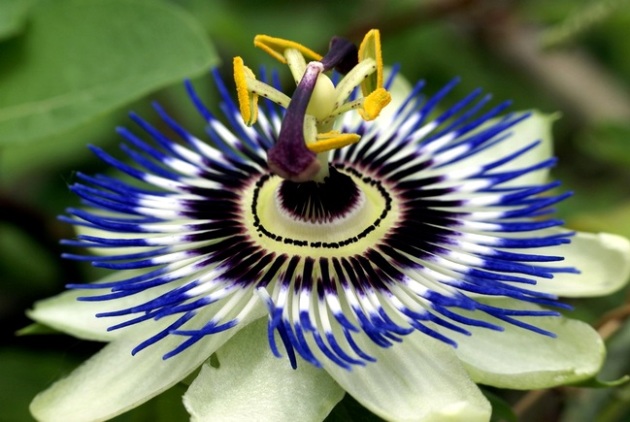
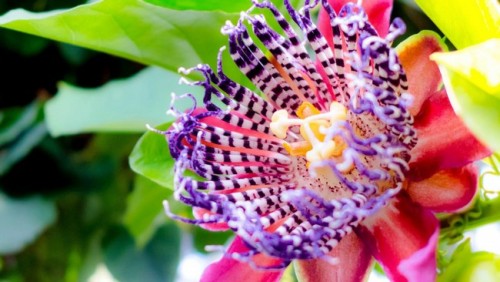
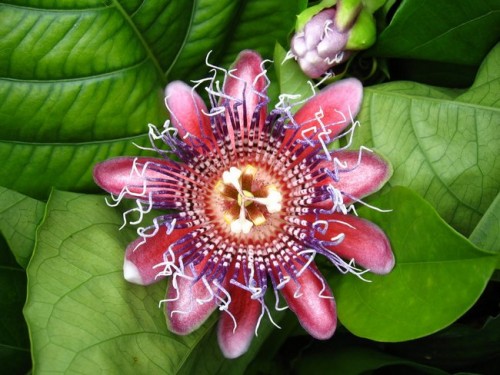
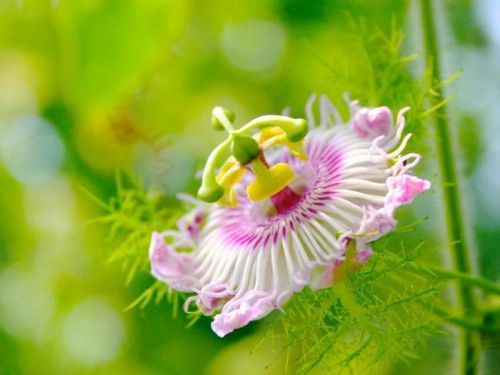
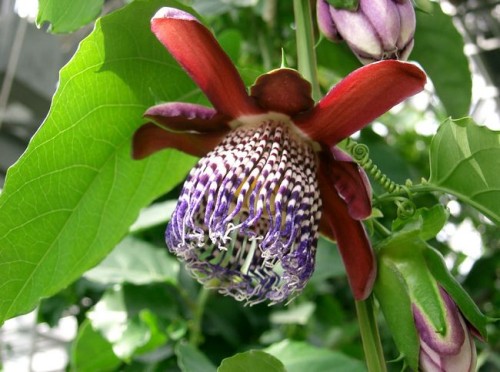

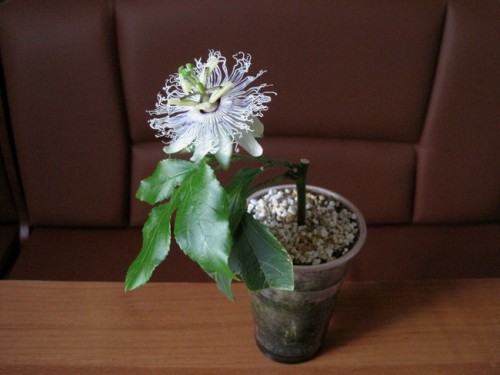
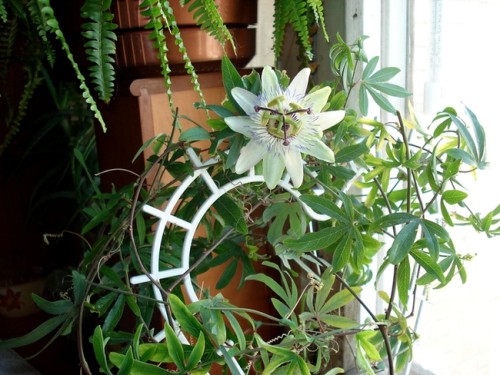
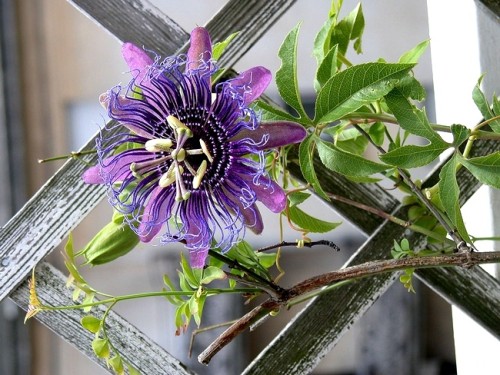
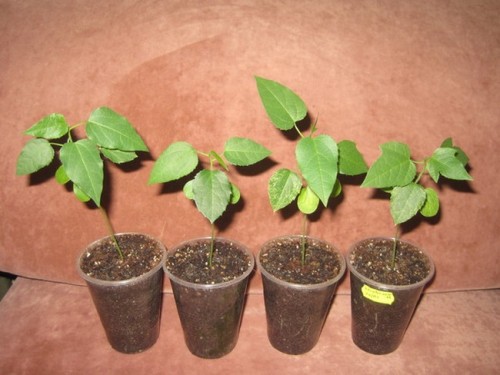
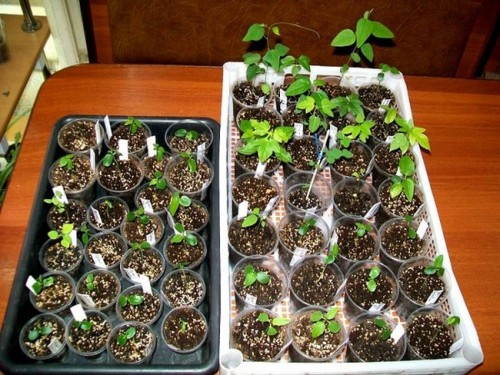
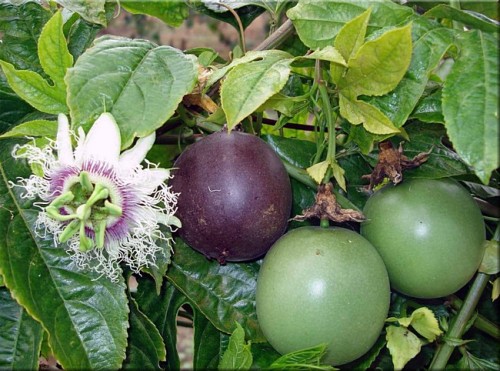
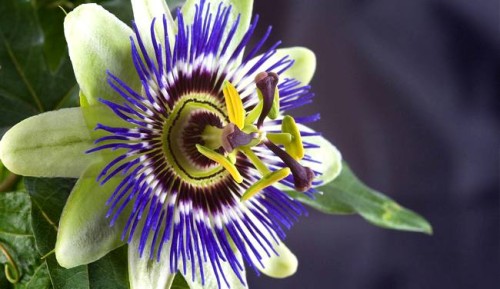
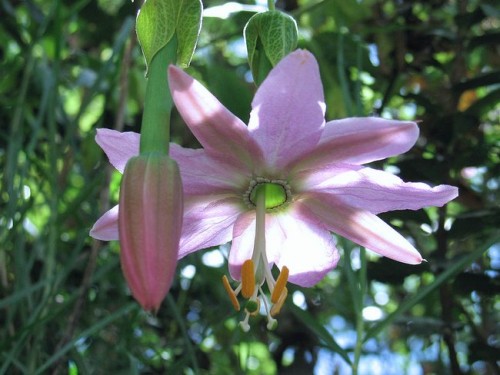
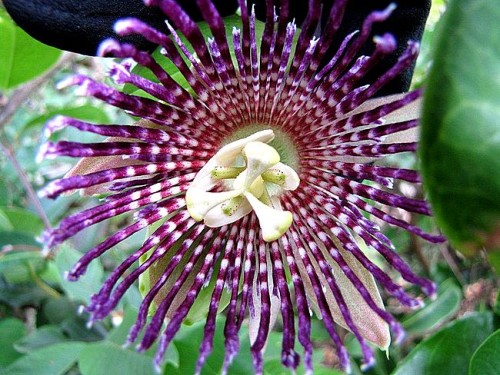
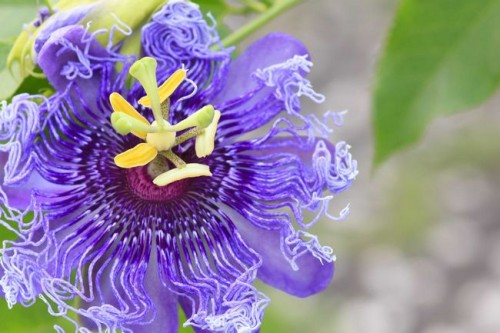

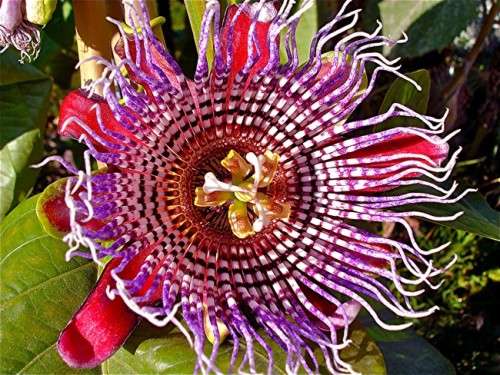












 Start a discussion ...
Start a discussion ...